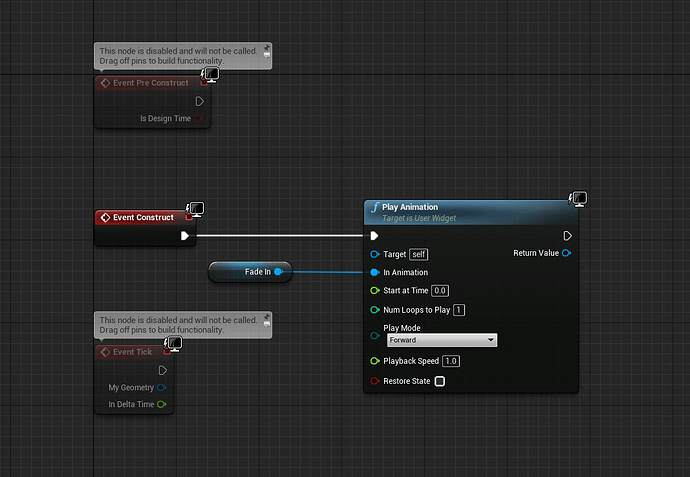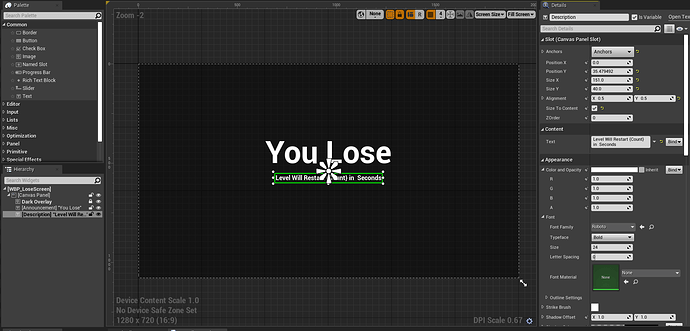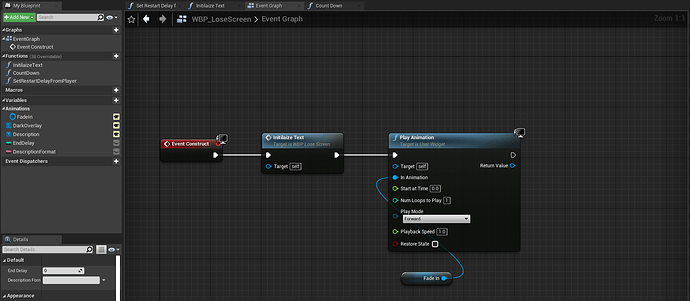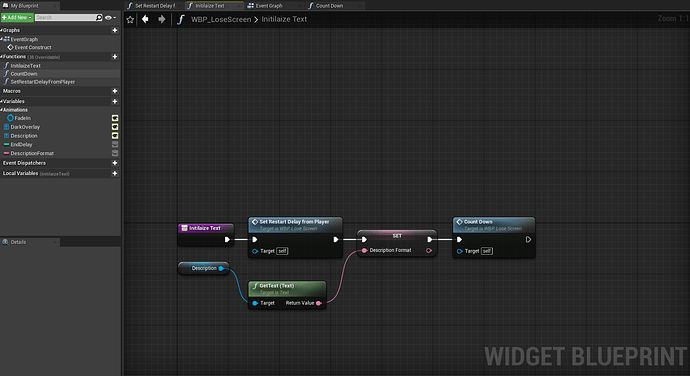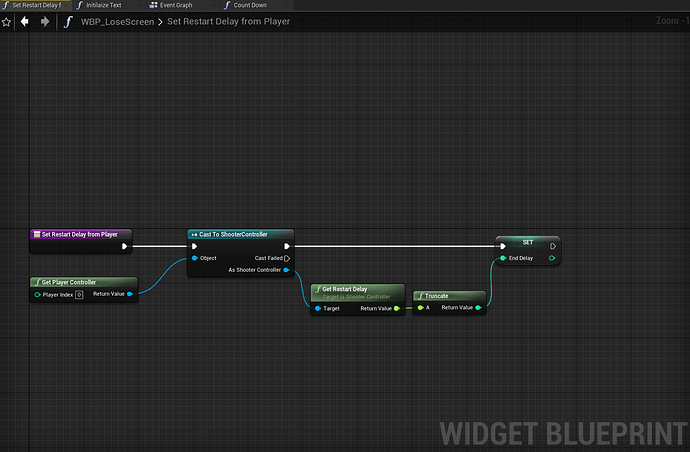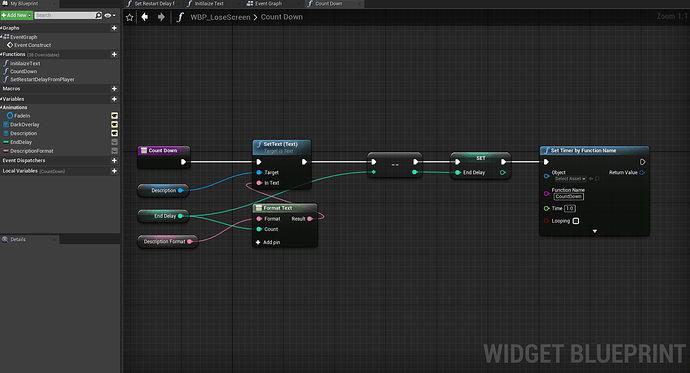I took it upon myself to customize it a bit. Namely, I added an overlay to the background which took more time than I thought it would to figure out, but its actually really easy.
The image widget doesn’t have to have an image, and so you can pick just a color instead, which perfectly suits my purposes. I’m 100% against red text, sorry about that, so I just stuck with white for contrast and readability reasons and set the overlay to rgba(0, 0, 0, 0.5).
For text size, I wanted to emphasize that the player lost, so I set the Annnouncement font to 115 so that it’s obnoxiously larger than the default description text below it. Setting reader precedence in this way is important to UX, so a good rule of thumb is that the largest font takes precedence and then attention moves outwards from the last users point of attention (this probably has a name, but I’m winging this name), from left to right, and top to bottom, bright to dark, and moving to non-moving.
I made sure to place the Dark Overlay layer above the Announcement and Description layers so I don’t have to mess with ZOrder at all. For those that do want to mess with ZOrder, the higher ZOrder items comes to the front, and lower items are further back. Negative ZOrder will place an item behind its parent, which can be useful. I don’t know how this differs from z-index for web applications, so those are the basics. I’d imagine it works closer to ZTransforms for web apps than z-index though.
Dark Overlay is also has the anchors set to fill screen, and I set the offset for each side to 0 so that the overlay changes depending on screen size.
Then of course I wanted to add animations, which is actually pretty easy. Having the screen just pop in instantly isn’t as fun. I created an Animation named FadeIn, which can be named whatever you want under the animation panel, because the actual animation happens under Timeline. This panel is non-interactive, so it’ll be fine them however.
I then created a track for the entire canvas panel, because there is 0 reason to set these animations separately and tracked Render Opacity in the timeline. At 0 seconds, Render Opacity should be set to 0, and then at 2.25 seconds, Render Opacity should be set to 1. I went with something long reminiscent of other classical defeat screens like in Dark Souls or Grand Theft Auto. It Gives players time to process that they lost, and it kind of rubs it in as a form of Time based Death Penalty. You can almost hear the screen as it fades in.
Then I went into the event graph and added a PlayAnimation node set to the FadeIn Animation I created and that’s really it.
Sorry for the long commentary. As a web designer, UX is kind of my element.


